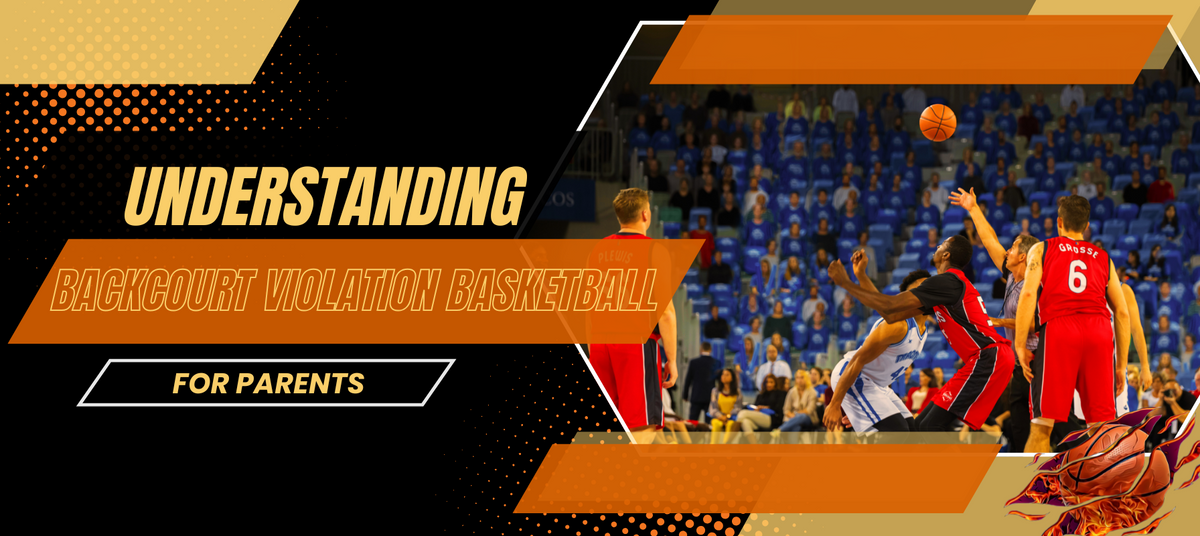
Understanding Backcourt Violation Basketball for Parents
|
|
Time to read 4 min
|
|
Time to read 4 min
Imagine this: your kid is dribbling down the court, feeling confident, maybe even a little flashy. But wait, the ref blows the whistle. Backcourt violation basketball? What does it even mean?. As a parent new to the world of basketball, it can be like learning a whole new language.
Don’t sweat it, we’ve all been there. Understanding the rules of basketball is vital. Sometimes wrapping your head around a “backcourt violation” can seem tricky at first. This breakdown will equip you with the knowledge to confidently explain it to your young athlete—and maybe even impress that chatty neighbor at the next game.
Essentially, a backcourt violation happens when the offensive team brings the ball back over the half-court line after already establishing possession in the frontcourt. Think of the half-court line as an invisible barrier once the ball crosses it.
Another way a violation occurs is when a player dribbling the basketball fails to advance the ball past halfcourt within 10 seconds after their team inbounds the basketball. This is against the backcourt violation rule.
To make things crystal clear, let’s dive into the two ways this violation can happen. Both involve that pesky half-court line, which, trust us, becomes pretty important.
Picture this: the offensive team hustles the ball across the half-court, maybe even scores a basket. Great job. But hold on…now a player winds up passing or dribbling the ball back over the half-court line. The opposing team did not touch the ball. Whoops, that’s an over-and-back violation, and the offensive team loses possession of the ball. Turnover. This rule applies whether a player passes or dribbles the ball back.
Here’s a head-scratcher: The offense has 10 seconds to get the ball over the half-court line once it’s inbounded. You would think that’s loads of time, but things can get heated under pressure.
Miss that 10-second deadline, and BAM—it's a backcourt violation. The defense is thrilled; they get possession of the ball, and your young player might just have a mini meltdown (we’ve all been there, remember those youth soccer games?). This commonly happens when a backcourt player has the ball.
To understand these common calls better, watch these backcourt violation videos that give actual gameplay examples.
So, you might wonder, why does this rule even exist? It seems a bit…extra, right? The backcourt violation basketball rule helps level the playing field.
Without it, teams could just camp out in their frontcourt, making it ridiculously hard for the other team to get the ball, which would make for a boring game. This rule also speeds up the pace and keeps things interesting for us fans in the stands.
Now that you have a handle on the basics, let’s equip you to coach your young athlete. Here are some tips you can use:
A backcourt violation happens when a player with the ball crosses the half-court line and then returns to the backcourt with the ball. Another way a violation occurs is if an offensive player passes the ball back to their team's backcourt after the ball has already crossed into the frontcourt. It can also happen when an offensive player fails to advance the ball past the half-court line within 10 seconds of their team gaining possession.
The “pass-back rule” is another name for an “over and back” violation. It happens when the offensive team passes the ball back over the half-court line after establishing possession in the frontcourt. It results in a turnover, and possession is given to the opposing team.
“Ball returned to backcourt” typically refers to an over-and-back violation. It means the offensive team has illegally brought the ball back to their backcourt after already crossing into the frontcourt.
The frontcourt and backcourt are defined by the half-court line, which divides the court in half. The frontcourt is the half of the court where the opponent’s basket is located. The backcourt is where your team’s basket is located.
This division is essential for rules like the backcourt violation, which prevents teams from hanging out in their frontcourt indefinitely.
Backcourt violation basketball: It sounds way more complicated than it is, right? Now you’re practically fluent in hoops jargon and ready to be the most supportive—and knowledgeable—basketball parent in the stands. Remember, clear communication, fun practices, and tons of encouragement go a long way in helping your child develop their skills and, most importantly, have a blast playing basketball.
Backcourt Violation Basketball. Backcourt Violation Basketball. Backcourt Violation Basketball. Backcourt Violation Basketball. Backcourt Violation Basketball. Backcourt Violation Basketball. Backcourt Violation Basketball. Backcourt Violation Basketball. Backcourt Violation Basketball. Backcourt Violation Basketball. Backcourt Violation Basketball. Backcourt Violation Basketball. Backcourt Violation Basketball. Backcourt Violation Basketball. Backcourt Violation Basketball. Backcourt Violation Basketball. Backcourt Violation Basketball. Backcourt Violation Basketball. Backcourt Violation Basketball.
This site requires cookies in order to provide all of its functionality.
